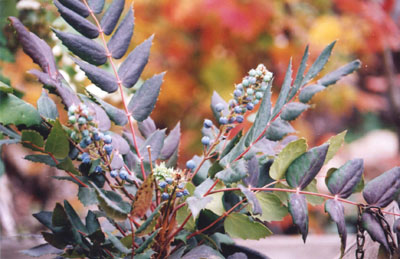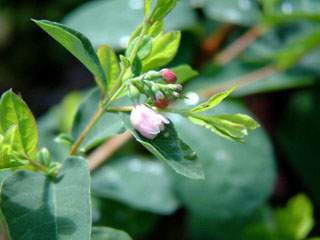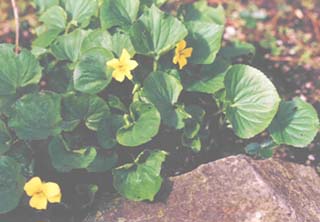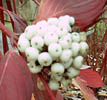Trees
Conifers
- Abies species (Noble Fir,
Grand Fir, Subalpine Fir)
· pine siskin, chickadees, nuthatches, grosbeaks, finches, crossbills, and grouse (s) · woodpeckers, sapsuckers (i)
- Calocedrus decurrens (Incense cedar) · chipping sparrows, hermit thrushes, siskins, flickers, and nuthatches (s) · sapsuckers, woodpeckers (i)
- Pinus species (Shore Pine, Lodgepole Pine) · grouse, crossbills, grosbeaks, chickadees, band-tailed pidgeons, quail, mourning doves, jays, nuthatches, finches, siskins (s) · bushtits, kinglets, chickadees, and woodpeckers (i)
- Pseudotsuga mensies (Douglas fir) · grouse, crossbills, siskins (s) · chickadees, nuthatches, brown creepers, and woodpeckers (i)
- Taxus brevifolia (Western Yew) · numerous (s)
- Thuja Plicata (Western Red Cedar) · grosbeaks, sparrows, waxwings, nuthatches, and siskins (s)
- Tsuga species (Western Hemlock, Mountain Hemlock) · juncos, siskins, chickadees, grouse, finches, crossbills (s) · Pileated woodpeckers (ants on Western Hemlock snags)
Broadleaf Evergreens
- Arbutus menziesii (Madrone) · quail, band-tailed pidgeons,flickers, varied thrushes, waxwings, evening grosbeaks, mourning doves and robins (f)
Deciduous
- Acer circinatum (Vine Maple) · grosbeaks. woodpeckers, nutchatches, finches, quail, and grouse (s)
- Acer macrophyllum (Big Leaf Maple)
· sapsuckers, woodpeckers, nuthatches, song sparrows, (i)
- Alnus rubra (red alder) ·
mallards, widgeons, grouse, bushtits, kinglets, siskins, vireos, warblers, and chickadees (s,i)
- Cornus nuttallii (Pacific dogwood) · sapsuckers, woodpeckers, bluebirds, tree swallows, vireos, thrushes, evening grosbeaks, white-crowned sparrows, song sparrows, towhees, grouse, jays, and house finches (f)
- Crataegus douglasii (Black hawthorn) · solitaires, robins, waxwings, grosbeaks, thrushes, woodpeckers, band-tailed pigeons, wood ducks, grouse, pheasants, and !turkeys! (f)
- Malus fusca (Western Crabapple) · grouse, geese, pheasants, sapsuckers, woodpeckers, jays, robins, waxwings, orioles, towhees (f) · finches, sparrows, waxwings (fl) · hummingbirds (n) NOTE:Birds will not eat the fruit of many hybrids - plant native if you want to feed our feathered friends!
- Prunus emarginata var.mollis (Bittercherry) · grouse, band-tailed pigeons, flickers, jays, rohins, bluebirs, waxwings, tanaagers, orioles, grosbeaks, finches, mourning doves, and towhees(f)
- Quercus garryana (Oregon White Oak) · wood ducks, mallards, turkeys, band-tailed pigeons, quails, grouse, woodpeckers, nuthatches, thrushes, towhees, jays, and Clark's nutcrackers (acorns)
- Rhamnus purshiana (cascara) · gamebirds, songbirds (f)
- Salix species (willow) · Blue grouse and songbirds (buds)
Shrubs&Groundcovers
Evergreen
- Arctostaphylos uva-ursi (Kinnikinnik) · band-tailed pigeons, evening grosbeaks, sparrows
- Cornus canadensis (Bunchberry) · sparrows, thrushes, vireos, grouse, pheasants
- Fragaria chiloensis, virginiana, vesca (Coastal Strawberry, Wild or Mountain Strawberry, Wood's strawberry) · robins, towhees, pine grosbeaks, grouse, waxwings
- Mahonia species · grouse, waxwings, thrushes, towhees, pheasants (f)
- Myrica californica · quail, waxwings, songbirds (f)
- Vaccinium species (Huckleberry) · pheasants, mourning doves, flickers, jays, robins, waxwings, orioles, tanagers, towhees, sparrows, and chickadees(f) · numerous (i)
Deciduous
- Amelanchier alnifolia (Serviceberry) · woodpeckers, crows, chickadees, thrushes, towhees, bluebirds, waxwings, orioles, tanagers, grosbeaks, goldfinches, juncos, grouse, pheasants
- Cornus stolinifera (Red Osier Dogwood) · vireos, warblers, robins, flickers, flycatchers, wood ducks, grouse, band-tailed pigeons, quail (f)
- Holodiscus Discolor (Oceanspray) · chickadees, bushtits, (i)
- Lonicera involucrata (Twinberry) · grouse, grosbeaks, juncos, waxwings, thrushes, flickers, finches, and quail (f) · hummingbirds (n)
- Philadelphus lewisii (Mock Orange) · grosbeaks, juncos, thrushes, bluebirds, chickadees, flickers, finches, quail, grouse (s)
- Prunus emarinata var.emarginata (Bittercherry) · grouse, band=tailed pigeons, flickers, jays, robins, waxwings, tanagers, orioles, and mourning doves
- Prunus virginiana (Chokechery> · woodpeckers, pheasants, grouse, jays, robins, thrushes, waxwings, vireos, orioles, and grosbeaks(f)
- Rosa spp. (Baldhip, Nootka, Clustered, and Wood's Rose) · grouse, bluebirds, juncos, grosbeaks, quail, pheasants, thrushes (f)
- Rubus spp. (salmonberry, thimbleberry) · chickadees, grosbeaks, jays, band-tailed pigeons, robins, sparrows, tanagers, towhees, waxwings, woodpeckers, wrens (f) · hummingbirds (n)
- Sambucus species (Red and Blue Elderberry) · sparrows, thrushes, warblers, orioles, bluebirds, jays, tanagers, grosbeaks, sapsuckers, woodpeckers, and band-taied pigions (f) · hummingbirds (n)
- Sorbus sitchensis (Sitka mountain-ash) · grouse, thrushes, waxwings, orioles, grosbeaks, robins, finches (f)
- Symphoricarpos albus (Snowberry) · grosbeaks, waxwings, robins, thrushes, towhees (f) · hummingbirds (n)
Vines
- Lonicera ciliosa/hispidula (Trumpet honeysuckle/Hairy honeysuckle) · grouse, pheasants, flickers, robins, thrushes, bluebirds, waxwings, grosbeaks, finches, and juncos (f) · hummingbirds (n)
Grasses and Forbs
- Aquilegia formosa (Western Columbine) · sparrows, juncos, finches (s) · hummingbirds (n)
- Aruncus sylvester (Goat's beard) · hummingbirds (n)
- Dicentra formosa (Pacific Bleeding Heart) · hummingbirds (n)
- Epilobium angustifolium (Fireweed) · hummingbirds (n)
- Heuchera spp. (Alumroot) · hummingbirds (n)
- Lupinus spp. (Lupine) · songbirds (s) · hummingbirds (n)
- Penstemon spp. (Penstemon) · hummingbirds (n)
|
Trees
golden-crowned sparrow on incense cedar
 ©Ellen Mast 2003
©Ellen Mast 2003
- Abies species (Noble Fir,
Grand Fir, Subalpine Fir)
- Acer macrophyllum (Big Leaf Maple)
- Alnus rubra (red alder)
- Calocedrus decurrens (Incense cedar)
- Chamaecyparis lawsoniana (Port Orford cedar)
- Crataegus douglasii (Black hawthorn)(good escape cover for songbirds)
- Pinus species (Shore Pine, Lodgepole Pine)
- Prunus emarginata (Bittercherry)
- Thuja Plicata (Western Red Cedar)
- Tsuga species (Western Hemlock, Mountain Hemlock)
Shrubs/Groundcovers
Kinnikinnik
 ©Ellen Mast 2003
©Ellen Mast 2003
- Arctostaphylos (Manzanita, Kinnikinnik)
- Cornus canadensis (Bunchberry)
- Corylus cornuta var.californica (Hazelnut)
- Holodiscus discolor (Oceanspray)
- Mahonia species (Oregon Grape)
Mahonia nervosa
 ©Ellen Mast 2003
©Ellen Mast 2003
- Myrica californica (Pacific Wax Myrtle)
- Prunus virginiana (Chokecherry)
- Rhododendron macrophyllum (Pacific Rhododendron)
- Rhododencron occidentale (Western Azalea)
- Rosa spp. (Baldhiip, Nootka, Clustered, and Wood's Rose)
- Rubus species (Salmonberry, Thimbleberry)
Thimbleberry
 ©Lory Duralia
©Lory Duralia
- Spiraea douglasii (Hardhack)
- Symphoricarpos albus (Snowberry)
Snowberry
 ©Ellen Mast 2003
©Ellen Mast 2003
Vines
- Lonicera ciliosa/hispidula (Trumpet honeysuckle/Hairy honeysuckle) · twining vine provides nesting sites for small birds
Grasses and Forbs
Maidenhair Fern
 ©Ellen Mast 2003 ©Ellen Mast 2003
- Adiantum pedatum (Maidenhair Fern)
- Athyrium filix-femina (Lady Fern)
- Deschampsia caespitosa (Tufted Hairgrass)
- Festuca idahoensis (Idaho Fescue)
- Polygonum paronychia (Beach Knotweed)
- Polystichum munitum (Sword Fern)
- Viola spp. (Streambank Violet, Evergreen Violet, Early Blue Violet)
Viola glabella, Streambank Violet
 ©Lory Duralia
©Lory Duralia
|













